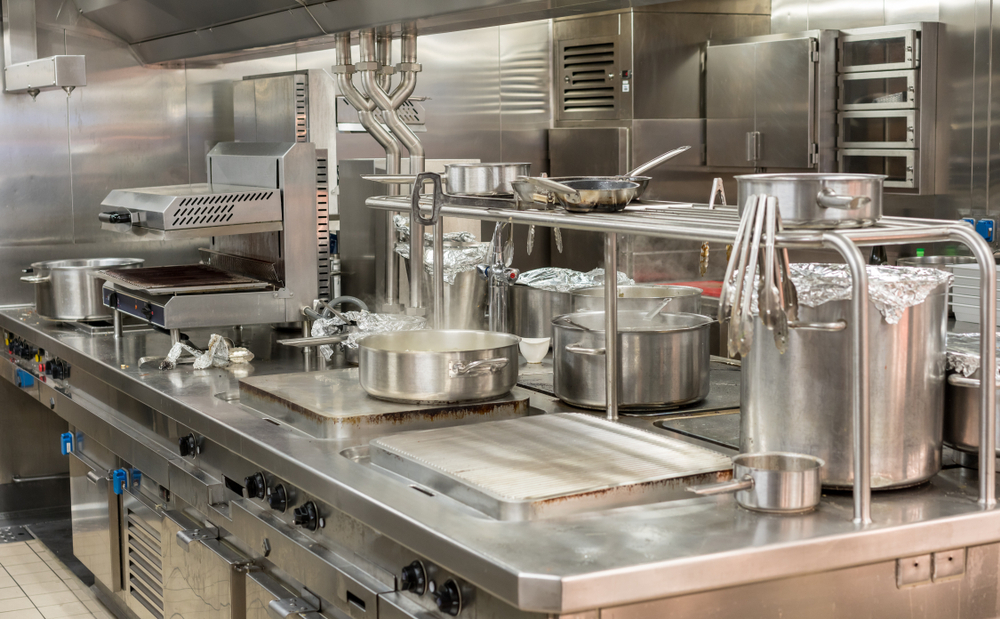Introduction
The Indonesia Commercial Cooking Equipment Market is experiencing steady growth, driven by the rapid expansion of the foodservice industry, increasing urbanization, and evolving consumer preferences. With the rise of quick-service restaurants, cafes, and cloud kitchens, the demand for efficient, high-performance cooking equipment has surged. However, a key debate shaping the market is the choice between electric and gas-based commercial cooking equipment. This article explores which option is gaining more traction in Indonesia by comparing cost-effectiveness, sustainability, and government incentives.
Market Overview and Growth Drivers
Indonesia's foodservice industry is booming, with increasing disposable incomes, changing dietary habits, and the rise of online food delivery platforms fueling market expansion. Several factors are driving the growth of commercial cooking equipment in the country:
· Expanding Restaurant Industry: The growing number of hotels, restaurants, and catering services (HoReCa) is boosting demand for high-quality cooking equipment.
· Government Regulations: Stricter regulations on energy efficiency and emissions influence the type of equipment businesses adopt.
· Technological Advancements: Smart kitchen appliances with automation features are becoming increasingly popular.
· Sustainability Concerns: The shift toward greener cooking solutions is influencing purchase decisions.
Electric vs. Gas Cooking Equipment: Which One is Gaining More Traction?
The choice between electric and gas cooking equipment in Indonesia depends on multiple factors, including cost, sustainability, and government support. While gas-based equipment has traditionally dominated the market, electric cooking solutions are gaining momentum due to increasing awareness of sustainability and energy efficiency.
Cost-Effectiveness: Gas Still Holds an Edge
One of the primary concerns for commercial kitchens in Indonesia is cost-efficiency.
· Gas Cooking Equipment: Generally, gas stoves, ovens, and grills have lower initial costs compared to electric alternatives. Additionally, natural gas and liquefied petroleum gas (LPG) are widely available and remain cheaper in the short term.
· Electric Cooking Equipment: While the upfront investment in electric appliances is higher, they offer greater energy efficiency, reducing long-term operational costs. However, Indonesia's electricity tariffs can be volatile, influencing overall savings.
Sustainability: The Shift Toward Greener Alternatives
Environmental considerations are playing an increasingly significant role in decision-making.
· Gas Cooking Equipment: Gas-powered stoves emit carbon dioxide (CO2) and other pollutants, contributing to environmental degradation. While gas remains popular, businesses looking to align with sustainability goals may reconsider their choices.
· Electric Cooking Equipment: Electric solutions, especially those powered by renewable energy sources, significantly reduce carbon footprints. Induction cooking, in particular, is gaining traction due to its energy efficiency and minimal heat loss.
Government Incentives and Policies
Indonesia's government is actively promoting energy-efficient solutions, which impacts the adoption of electric and gas cooking equipment.
· Subsidies for Gas Equipment: The Indonesian government provides subsidies for LPG, making gas-powered cooking equipment more affordable for commercial users. This has historically given gas an advantage in the market.
· Incentives for Electric Cooking: Recent initiatives focus on promoting electric cooking solutions as part of Indonesia’s push toward clean energy. Incentives for energy-efficient appliances and investment in renewable energy sources are making electric equipment a viable alternative.
Key Players in the Indonesian Commercial Cooking Equipment Market
Several local and international manufacturers are competing to meet the growing demand for commercial cooking solutions in Indonesia. Some of the leading players include:
· Rinnai Corporation: A dominant player in gas-based cooking appliances with a strong market presence.
· Electrolux: A global leader in electric cooking solutions, offering energy-efficient appliances.
· Panasonic: Known for its induction cooking ranges and smart kitchen technologies.
· Miyako: A key domestic brand focusing on affordable electric kitchen equipment.
· Modena: A strong player in both gas and electric cooking appliances.
Future Outlook: Will Electric Equipment Overtake Gas?
While gas cooking equipment currently dominates the market, the shift toward electric solutions is becoming evident. Several factors will influence the future of Indonesia’s commercial cooking equipment market:
· Rising Energy Prices: If gas prices increase or subsidies are reduced, businesses may shift toward electric alternatives.
· Improved Electricity Infrastructure: Investments in renewable energy and stable electricity supply will make electric cooking more attractive.
· Government Regulations: Stricter emission standards and energy efficiency policies may accelerate the transition to electric solutions.
Conclusion
The Indonesia commercial cooking equipment market is at a turning point, with both gas and electric solutions having their advantages. While gas remains the preferred choice due to its affordability and widespread availability, electric cooking equipment is gaining traction due to sustainability initiatives and government incentives. Businesses in the foodservice industry must weigh their priorities—whether cost savings, environmental responsibility, or compliance with future regulations—when selecting their commercial cooking equipment. As the market evolves, electric cooking solutions are likely to play a more significant role in shaping Indonesia’s food industry.





Comments